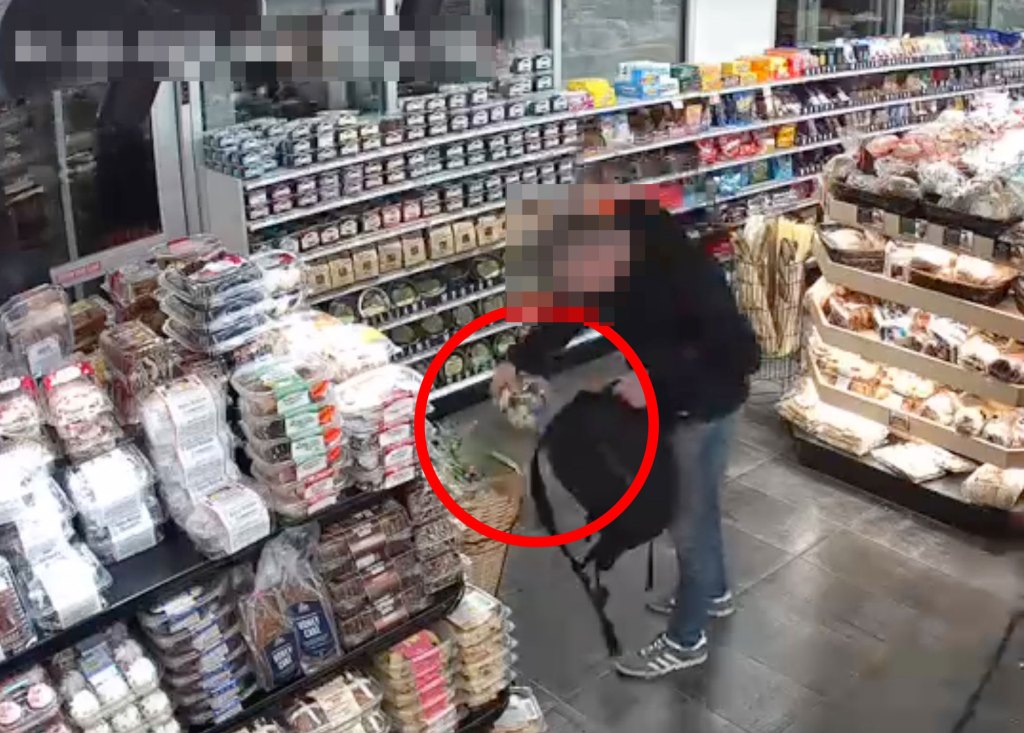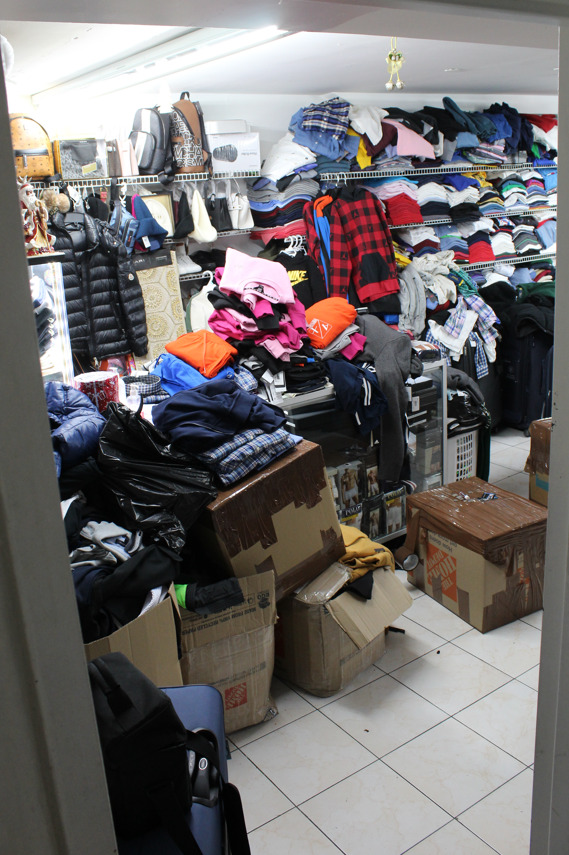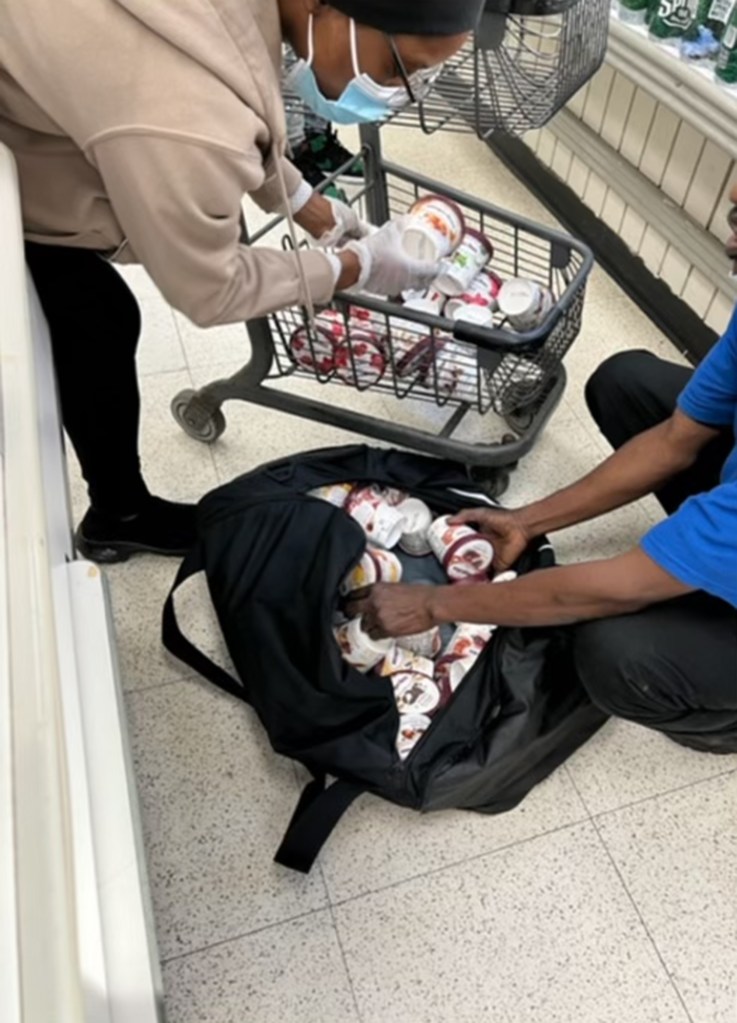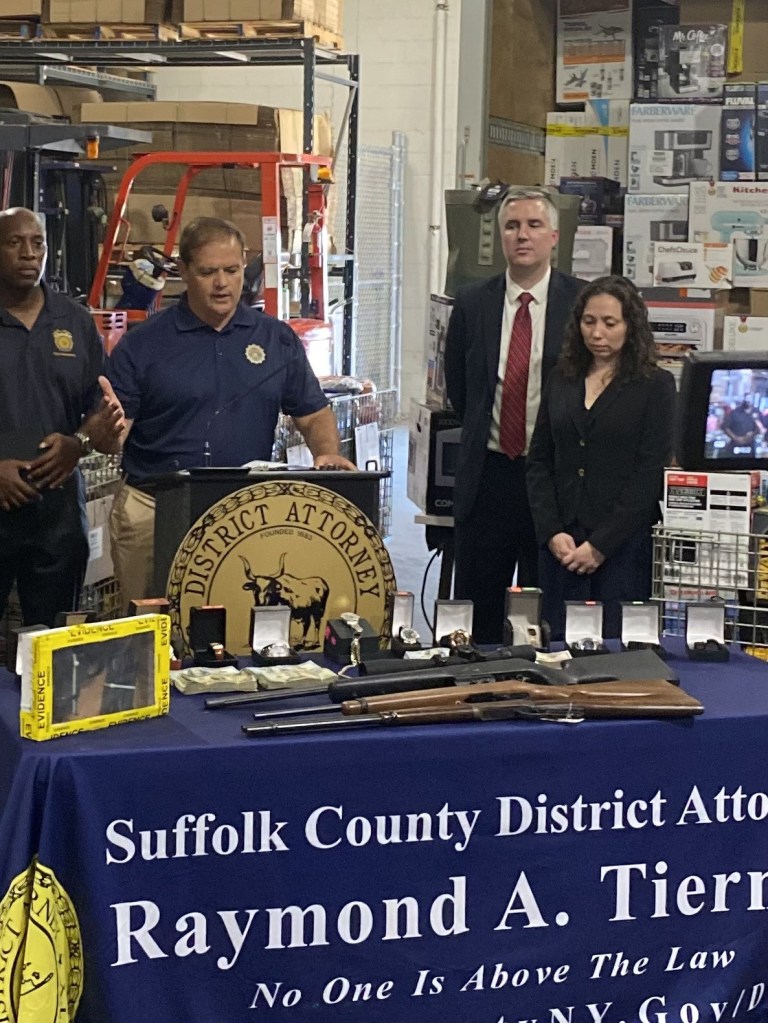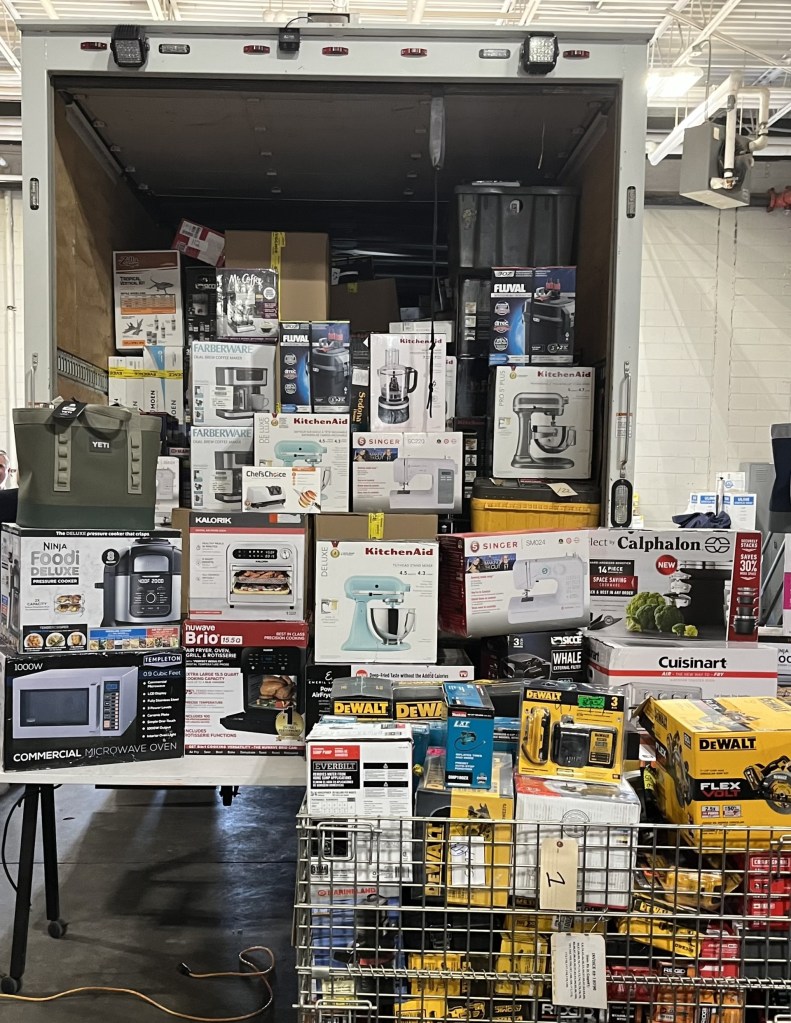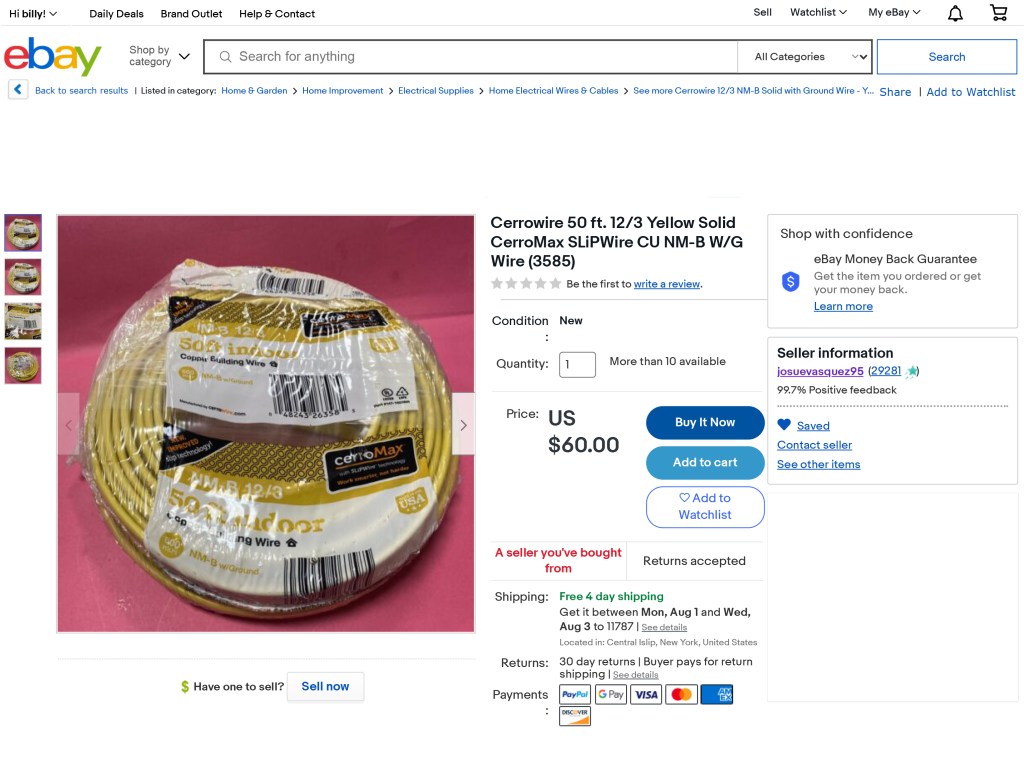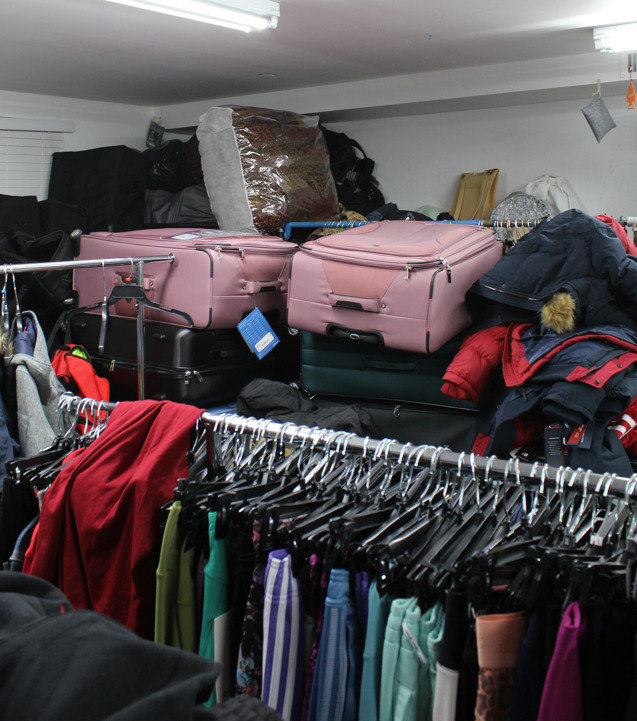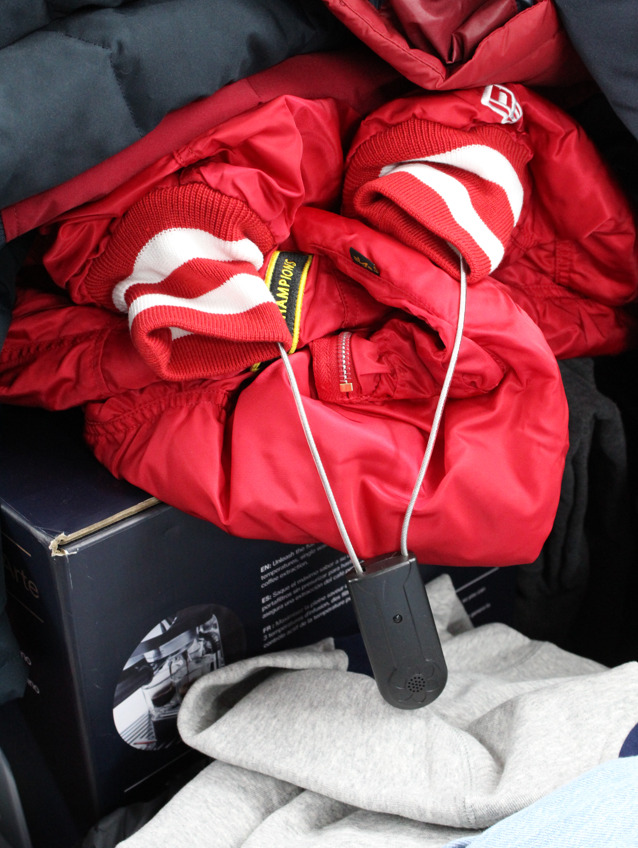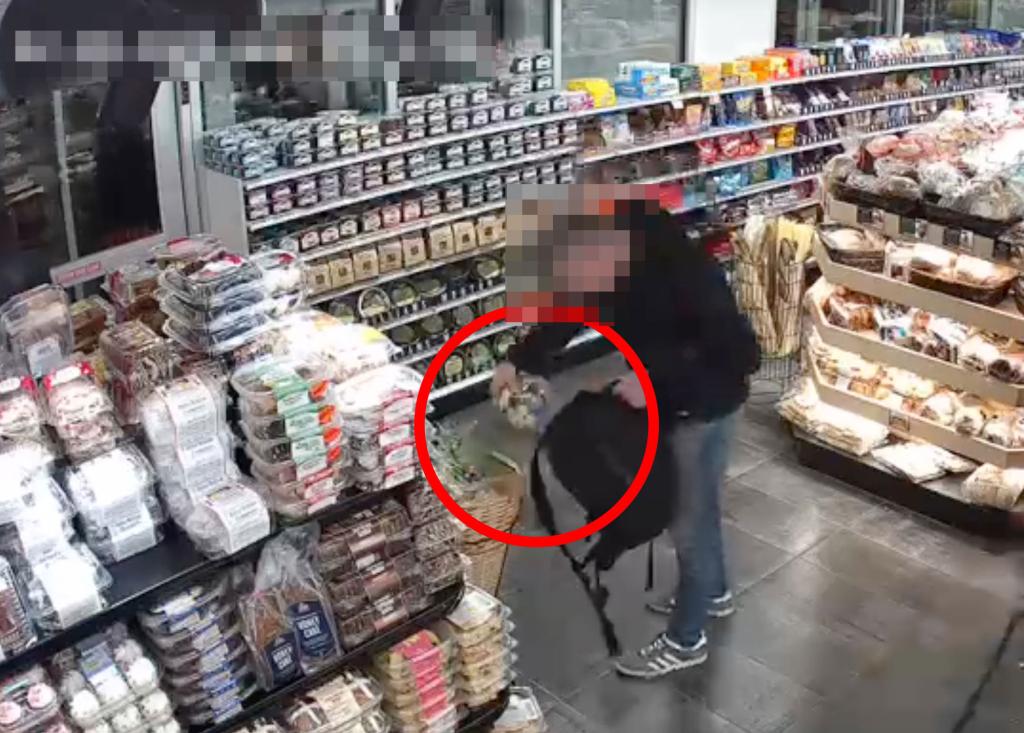New York’s $4.4B shoplifting shadow economy revealed — fueled by eBay and Facebook Marketplace
A shoplifting epidemic costing retailers in New York state $4.4 billion a year is creating a shadow resale economy that ranges from eBay to bodegas, The Post has learned.
Shoplifting in New York City alone rose 64% from June 2019 to June 2023, according to the Council on Criminal Justice.
In 2022, the total estimated loss to shops in the state was $4.4 billion, Gov. Kathy Hochul said in February.
And retailers and law enforcement told The Post that the need to sell the stolen goods has created a sprawling underground economy.
Thieves and middlemen are selling shoplifted goods on resale sites such as eBay and Facebook Marketplace and filling warehouse spaces at illegal pawn shops.
A raid in Queens found a space stuffed with apparently stolen goods — and a garbage bag full of removed security tags.
They are even “boosting” perishable items such as Häagen-Dazs ice cream directly to bodegas.
In one scam, they shoplift high-value items from national chains, have them returned at another branch out of state for credit and then sell the credit note for cash outside the branch.
At the most damaging levels, thieves are directed by Dickensian organizers with “shopping lists,” telling them exactly what to go after.
“They get shopping lists for items that include cellphones, power tools, handbags,” a law enforcement source who specializes in fraud told The Post.
“They bring stolen goods to [illicit] wholesalers in the five boroughs.”
The middlemen buy items for pennies on the dollar — “There is no underlying cost,” said the fraud specialist — and sell the goods.
“Members of the booster crew get their cash,” the source said.
“Then the dealer, if you will, distributes them through his own network, via storefronts, if he has them, or he puts them online and sells to consumers through Facebook Marketplace.”
To seem like typical users of online marketplaces, the law enforcement source added, fences “sell one, list the next one and keep doing that all day. Or else they maintain multiple online identities.”
A report by the National Retail Federation and private security firm K2 in April 2023 found evidence of widespread use of Facebook Marketplace, which allows users to list items for sale directly, and Craigslist.
The report looked for listings of items typically targeted by organized retail theft rings — such as Tide pods, diapers and items listed as “new with tag” — and found that in New York, 26% of listings for those items had the hallmarks of “organized retail crime.”
Facebook Marketplace did not respond to a request for comment.
An eBay spokesperson told The Post, “eBay is committed to providing a secure online shopping experience. We have zero tolerance for criminal activity.”
Suffolk County District Attorney Ray Tierney said he had busted a super-size version of such an operation.
Get all the stories that move New York to your inbox
Sign up for our Metro Daily newsletter!
Thanks for signing up!
“We surveilled the boosters and saw them transporting their goods to EZ Cash Pawn & Jewelry in Brentwood,” said Tierney.
“The goods, which seemed to be stolen locally, would be kept in a room behind the pawnshop. It looked like a Home Depot warehouse.”
It was stuffed with items including DeWalt power tools, KitchenAid mixers, Singer sewing machines and Ninja Foodie Delux pressure cookers. There were also building supplies — and designer clothes and purses.
Court documents show they were sold on eBay and another website, Tradesy, a now-defunct marketplace for luxury goods.
As to how the thieves find the fences, Tierney said, “Based on our investigation, boosters learn of locations to fence stolen goods via word of mouth in the criminal community.”
Some fences run their own shops, where they mix stolen, counterfeit and discontinued items, presenting an extra challenge to law enforcement.
“There will be a cash register and racks of clothing. But the clothing is mostly stolen. Mixed in will be counterfeit and discontinued pieces from legitimate companies. That makes it more challenging for us,” the source said.
Shoplifters also coordinate to use return policies to profit.
“Home Depot has been trying to combat this for a long time,” said the law enforcement source. “The criminal will shoplift a power saw that sells for $600. Because people might be on the lookout for him, he’ll drive to Pennsylvania.
“Then somebody with a fake driver’s license will return it to Home Depot there for credit. We’ve seen it where there are hundreds of thousands of dollars, per driver’s license, in returns.
“And when Home Depot gets onto that license, they switch.”
Some thieves will sell their credit slips for cash outside the stores where they made the fraudulent return. “They’ll sell $600 of Home Depot credits for $400 in cash,” the source said.
They will even go back into the Home Depot branch with the person they sold it to in case staff ask for ID when the credit slip is being used. “They’ll be, like, ‘This is how confident I am,'” the source said.
Cross-state travel is part of the pattern, Tierney told The Post.
“In a 2022 arrest, when a group cleaned out $94,000 worth of purses from a Balenciaga store in East Hampton, a defendant was wearing an ankle bracelet from a prior arrest in another jurisdiction,” he said.
In other cases that law enforcement had dealt with, said Tierney, “Shoplifters would start in New Jersey, begin driving, and basically shoplift their way to Suffolk County to deliver the goods.”
But often the illegal sales are far more direct: When city supermarkets get hit, the shoplifters turned around stolen food without missing a step.
“Shoplifters steal bacon and steak from us; then they are down in the subway, selling them to people,” Victor Collelo, meat and fish director for Morton Williams Supermarkets in New York City, told The Post.
“A girl who worked for me told me about getting her hair done in the Bronx. A guy was in there, taking orders from people, asking what kind of food they wanted. Then he was going to Morton Williams and stealing it.”
With other perishable items, thieves have to turn them around quickly.
“Shoplifters steal all Häagen-Dazs from our supermarket and take it four blocks away to the nearest bodega,” John Catsimatidis, CEO of Gristedes and D’Agostino, told The Post.
Dominick Albergo, Catsimatidis’ head of security, said, “The shoplifters come in with a garbage bag, put 30 containers into the bag and take off.
“Then we find them in the bodegas and tell the bodega owners that if we find them again, we will go to the precinct and have them locked up.
“The good news is, at that point, most of the bodegas got nervous about buying stolen goods.”
